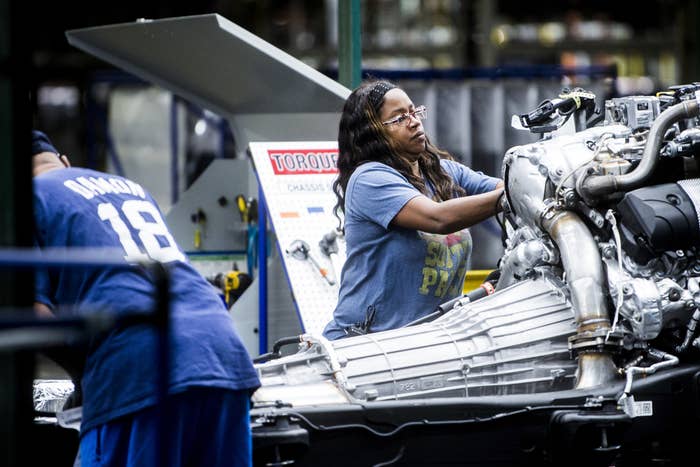
There’s a magical day that comes once each year when every news outlet publishes a story or two about workers and the labor movement. Then we all go to bed, wake up the next morning, and return to a world where unions and workers are hardly noticed at all.
The lack of attention paid to labor issues — the overwhelming majority of news outlets lack a single full-time labor reporter — has disastrous results, particularly for workers in the anti-union South. According to research by University of Northern Iowa media studies professor Chris Martin, there are “just six full-time labor reporters in the top 25 newspapers across the US, none in network or cable news, none at NPR or PBS, and just a few at digital news organizations and magazines on the left.”
The results speak for themselves. Earlier this summer, workers at a Volkswagen factory in Chattanooga, Tennessee, voted against unionizing by a margin of just 23 votes. Victory would have led to the first unionized foreign-owned auto plant in the South, and likely would have opened the door for more unions in the country’s most worker-hostile region.
I was there on the ground in Chattanooga in the lead-up to the vote, and watched as Volkswagen and its anti-union allies defined the United Automobile Workers, one of the country’s largest unions, as an outside force that destroyed Detroit. In the press and in paid TV ads, they warned that the union was only interested in taking money from workers and could destroy the region’s auto factories.
The message worked. After the narrow defeat in the union vote, many local labor activists blamed the media’s failure to cover local unions already in the area as a key reason why many workers voted against them.
“We’ve got over 5,000 union members in Chattanooga, and the media didn’t make it seem like unions were already in Chattanooga,” said LaKecha Strickland, a local bus driver and member of the Chattanooga Area Labor Council. “The public is not aware of the unions because the media doesn’t cover them, so when unions try to organize in Chattanooga, they are seen as outsiders.”
But recent years have shown that when workers in the South do get positive coverage, they are able to win. Just look at the teachers strikes in states like Kentucky, West Virginia, North Carolina, Oklahoma, South Carolina, and Virginia — or the widespread public support for laid-off coal miners demonstrating in Kentucky.
The teachers strikes “had a lot of community support and that was portrayed in the media,” said American Federation of Teachers President Randi Weingarten. “I think what happened with the UAW was that they ran a great campaign, but the outside ambient noise was deafening.”
North Carolina, where 20,000 teachers went on strike in May 2018, currently is tied with South Carolina for the lowest unionization rate in the country — with just 2.7% of all workers belonging to unions there. But the state’s labor movement is now growing, with unions gaining 3,000 new members in 2018. It has gained members in each of the last three years.
Union leaders in North Carolina say that if only the media would cover their progress, they could make even more progress.
“When the media doesn’t cover important struggles, especially victories that we are having in the South, it discourages rather than inspires workers who want to organize,” said North Carolina AFL-CIO President MaryBe McMillan. And on the other side, many warn that the failure to cover workers leads to even further distrust in the media, at a time when the right is pushing a constant anti-media message.
“Why would people attend to a media that doesn’t value them as audience members?” said Martin, author of the new book No Longer Newsworthy: How the Mainstream Media Abandoned the Working Class. “They aren’t talking to you so why would you believe them?”
Instead, Martin said many workers turn away from mainstream media to alternative sources.
“There is a conservative media that really tries to appeal to at least part of the working class, the white working class, for more cultural rather than economic reasons, but that really divides the working class racially,” he said. “But it also just hurts the morale of the working class in general, because they are not seeing themselves, and what a good idea it would be to belong to a labor union portrayed on any regular basis in the media.”
Public sentiment toward unions is at its highest level in 50 years, according to a recent Gallup opinion poll that showed 64% voicing approval. The question is: Will workers fighting for their rights keep getting attention once Labor Day is past us? Or will right-wing propagandists, who seek to divide workers on issues of race and gender, be the winners of a media industry that overlooks the working class?
CORRECTION
MaryBe McMillan’s name was misspelled in an earlier version of this post.
Mike Elk is a Sidney Award–winning labor reporter and the founder of PaydayReport.com. He can be reached at melk@paydayreport.com.
